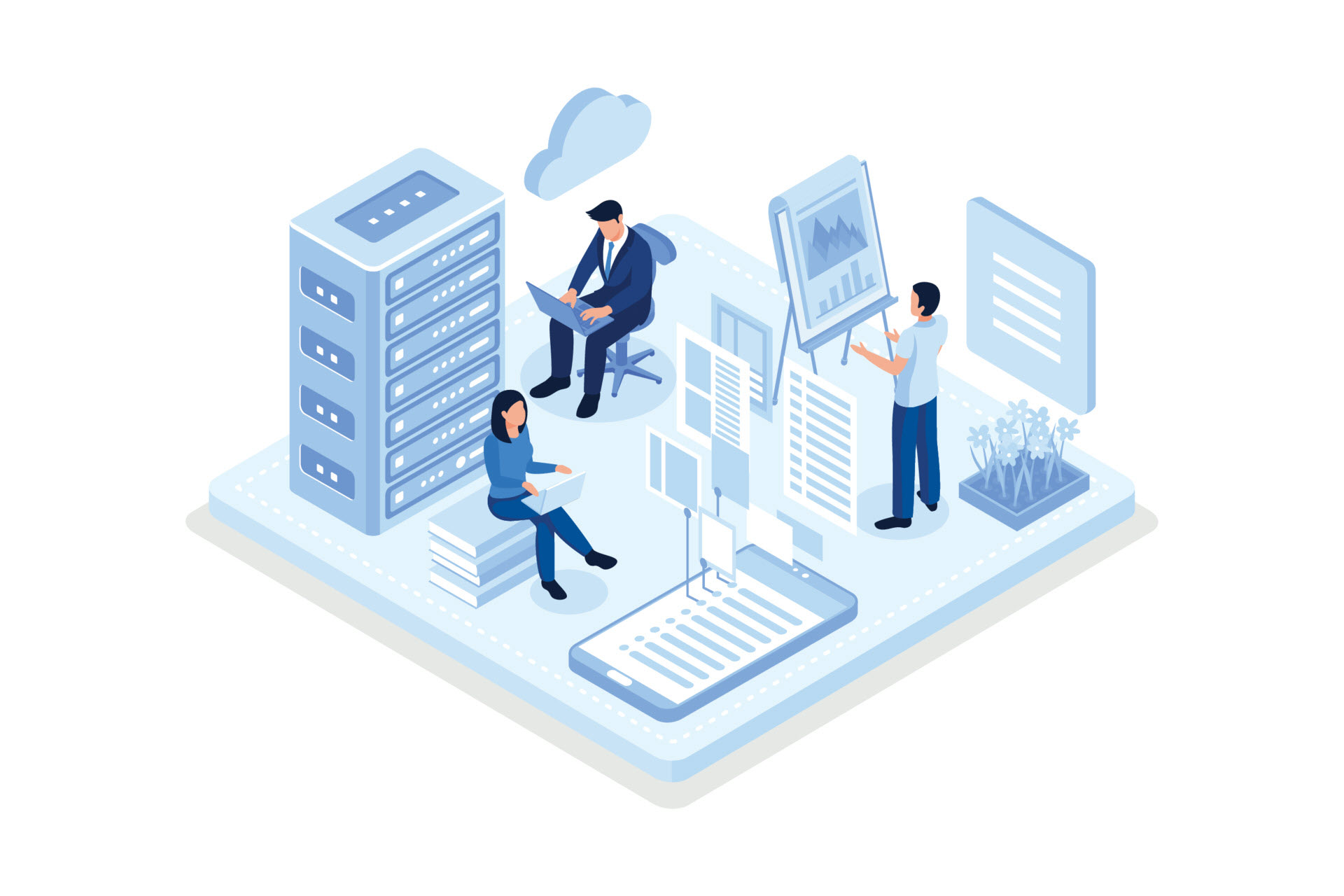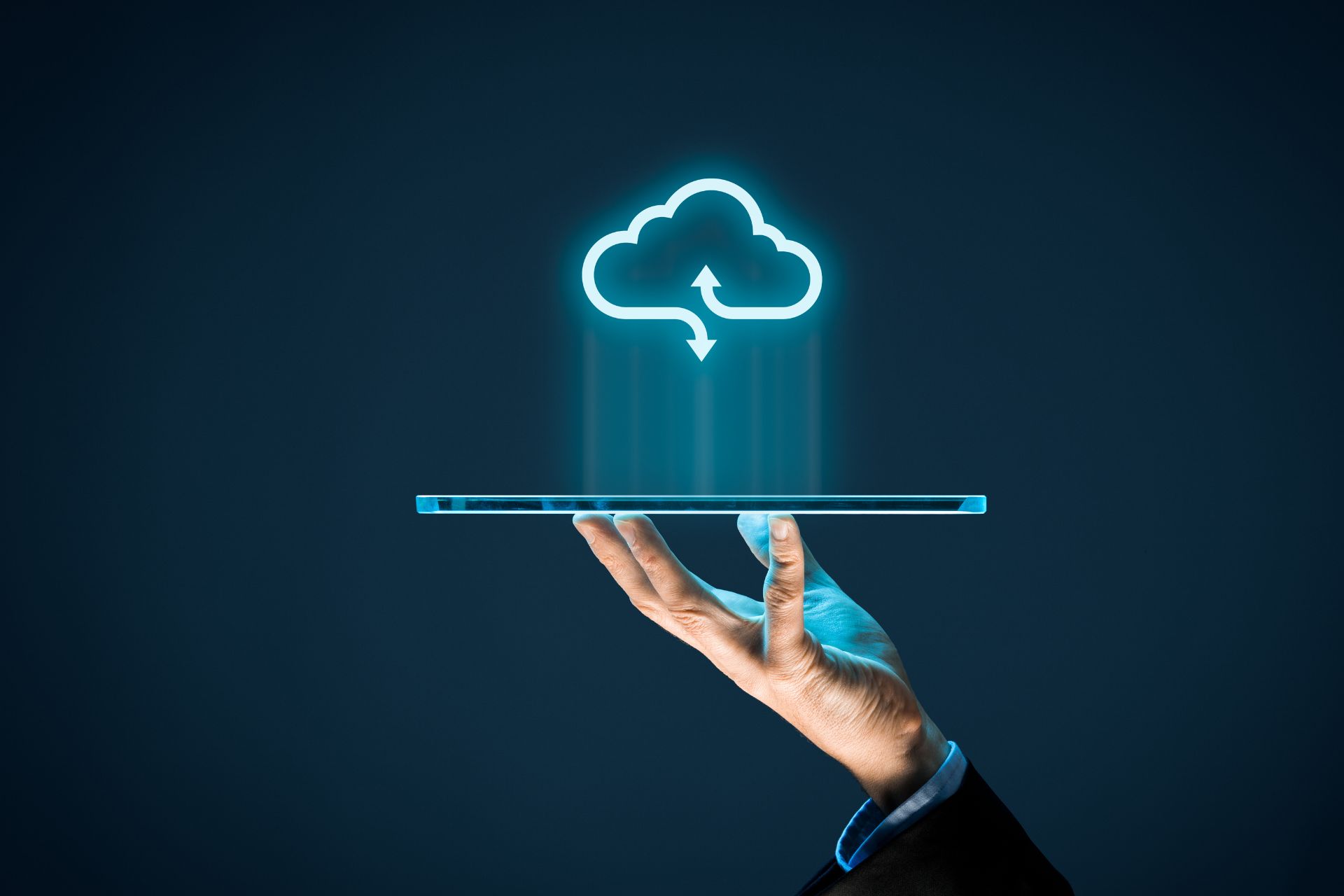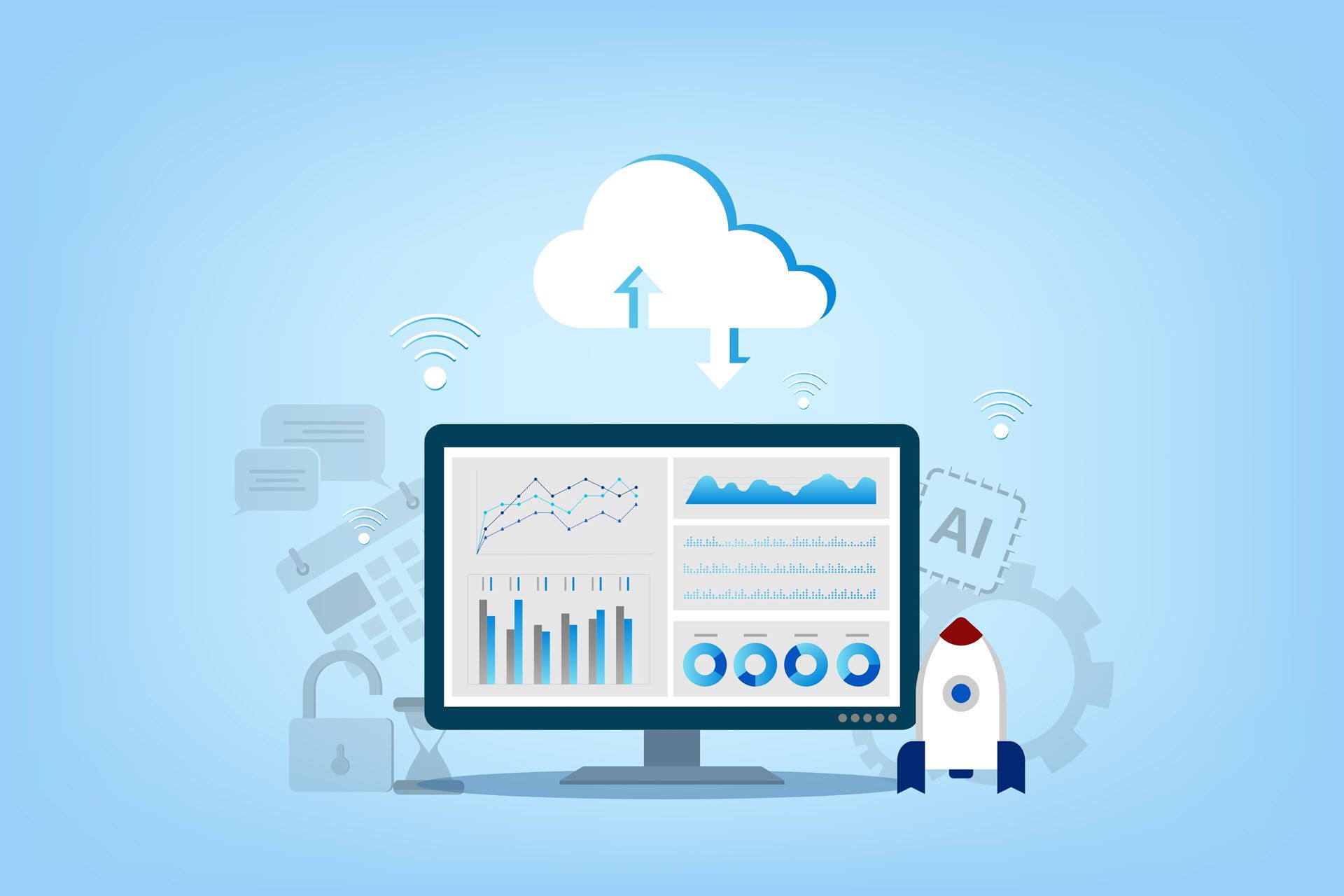An IT edge is where end devices connect to a network to deliver data and receive instructions from a central server, either a data center or the cloud. While this model worked in the past, modern devices generate so much data that companies require expensive equipment to maintain optimal performance.
Edge computing solves this problem by bringing processing closer to the device that generates data. Data does not need to travel to a central server for processing, so there are no latency or bandwidth issues.
This article is an introduction to edge computing. We explain what edge computing is, discuss potential use cases, and show how this technology leads to cheaper and more reliable data processing.

What Is Edge Computing?
Edge computing is a type of computing that takes place at or near the edge of a network. The processing occurs either within or close to the device, so less data travels to the central server. Most operations happen in real-time near the source of data, which leads to:
- Improved response times.
- Better bandwidth availability.
- More reliable system insights.
- More comprehensive and quicker data analysis.
- High availability.
Edge computing also helps keep workloads up to date, ensure data privacy, and adhere to data protection laws such as HIPAA, GDPR, and PCI. This processing model also enables further innovations with artificial intelligence and machine learning.
Edge devices collect and store data before sending information to an on-premises edge server. This server handles the following activities:
- Real-time data processing.
- Data visualization and analytics.
- Cashing and buffering.
- Data filtering.
The edge center sends the most complex processing requests (big data operations and business logic) to the data center or the cloud. While the need for a central dedicated server is still there, a business can set up slower, less expensive connections without risking latency due to local operations and pre-sorted data.
Our guide to data center security explains how infrastructure providers keep their data centers safe from potential breaches.
Edge Computing vs. Cloud Computing
The main distinction between edge and cloud computing is where processing takes place:
- In cloud computing, all data operations happen at a centralized location.
- In edge computing, most data-related processes occur locally (on the edge of the environment).
Edge computing is ideal for use cases that rely on the processing of time-sensitive data for decision-making. Another use case where edge computing outperforms cloud solutions is in operations at remote locations with limited or no Internet connectivity.
However, edge computing is not a replacement for the cloud. These technologies are not interchangeable; edge computing complements the cloud, and the two technologies ensure better performance for specific use cases.
Our in-depth Edge Computing vs Cloud Computing article outlines the main differences between the two technologies.
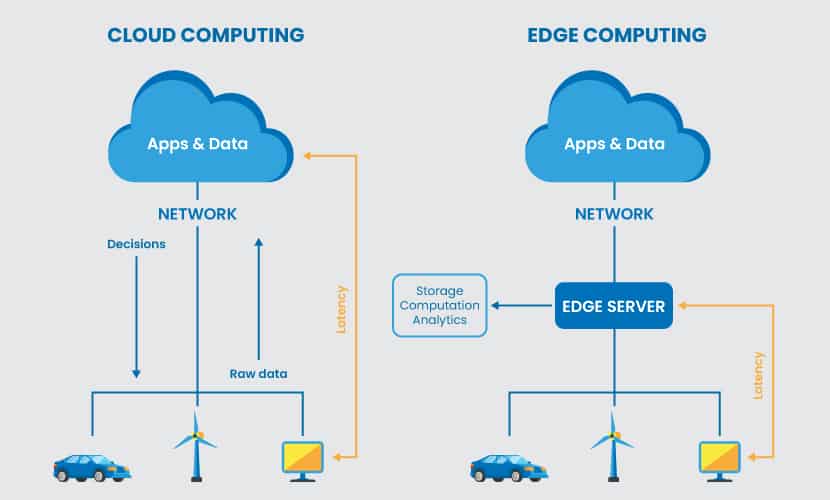
Cloud and edge computing have a symbiotic relationship that suits particular use cases. Learn more about cloud-native edge computing.
Edge Computing Architecture Explained
Here are the key components that form an edge ecosystem:
- Edge devices: A special-purpose piece of equipment with limited computing capacity.
- Edge node: Any device, server, or gateway that performs edge computing.
- Edge server: A computer located in a facility close to the edge device. These machines run application workloads and shared services, so they need more computing power than edge devices.
- Edge gateway: An edge server that performs network functions such as tunneling, firewall management, protocol translation, and wireless connections. A gateway can also host application workloads.
- Cloud: A public or private cloud that acts as a repository for containerized workloads like applications and machine learning models. The cloud also hosts and runs apps that manage edge nodes.
Edge computing has three primary nodes: the device edge, local edge, and the cloud.
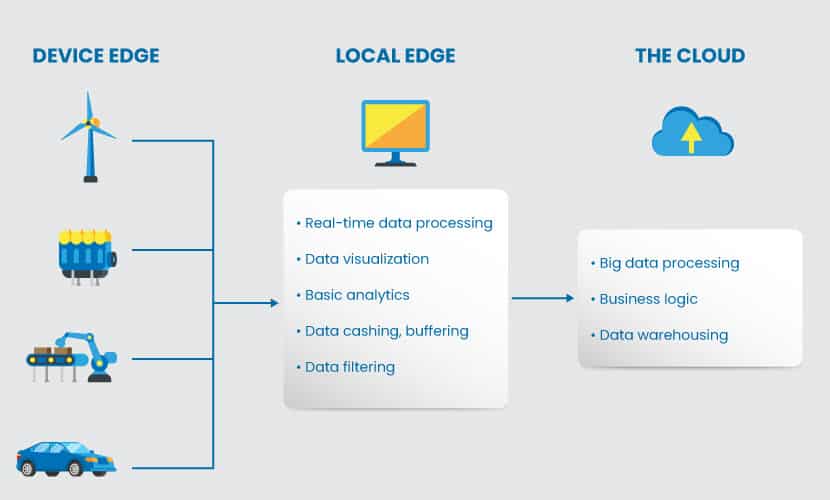
Device edge is the physical location where edge devices run on-premises (cameras, sensors, industrial machines, etc.). These devices have the processing power to gather and transmit data.
Local edge is a system that supports the applications and the network workloads. The local edge has two layers:
- An application layer that runs apps that edge devices cannot handle due to a large footprint (complex video analytics or IoT processing, for example).
- The network layer that runs physical or virtualized network components such as routers and switches.
The cloud (or the nexus) runs application and network workloads that manage the processing other edge nodes cannot handle. Despite the name, this edge layer can run either as an in-house data center or in the cloud.
The illustration below presents a more detailed architecture and shows components relevant to each edge node.
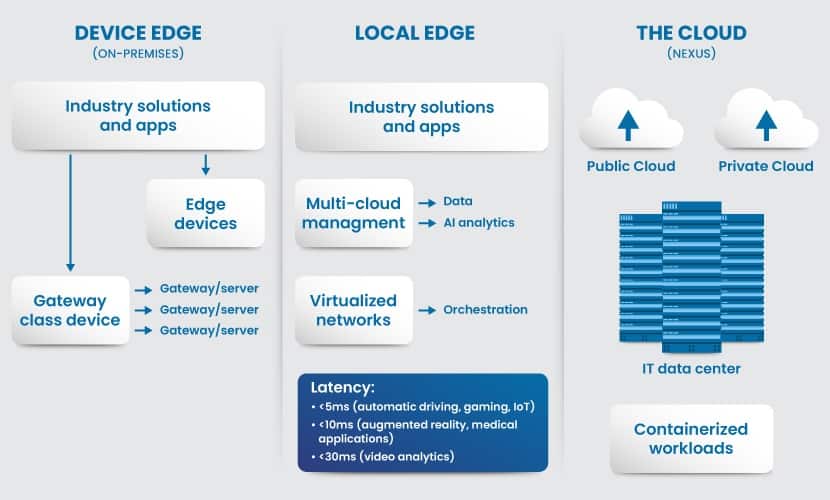
Industry solutions and applications can exist in multiple nodes as specific workloads are more suitable for either the device or the local edge. Some other workloads can also dynamically move between nodes under certain circumstances (either manually or automatically).
Virtualization is a vital element of a large-scale edge computing setup. This technology simplifies the deployment and operation of multiple applications on edge servers.
Read about the role of virtualization in DevOps and how virtual machines allow teams to rely on flexible and consistent environments.
Advantages of Edge Computing
Below are the most prominent business benefits of using edge computing.
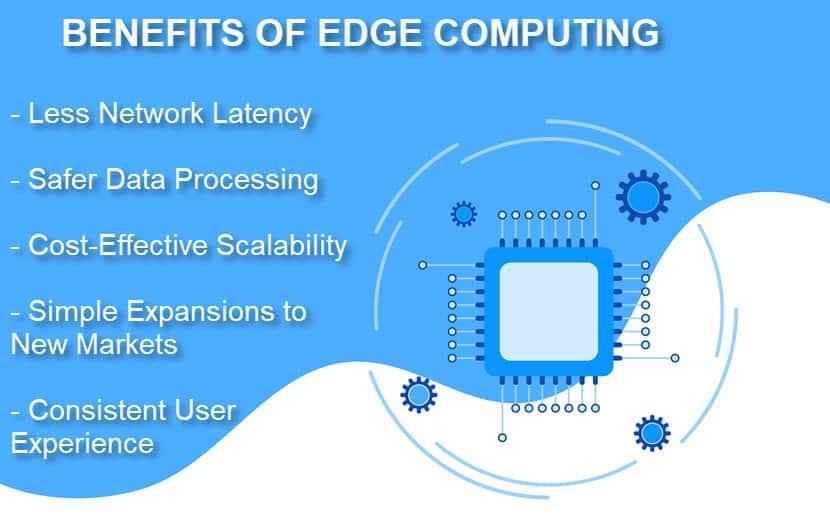
Latency Reduction
Edge computing improves network performance by reducing latency. As devices process data natively or in a local edge center, the information does not travel nearly as far as in a standard cloud architecture.
For example, two coworkers in the same building exchanging emails can easily experience a delay via standard networks. Each message routes out of the building, communicates with a distant server, and comes back to the recipient’s inbox. If that process happens at the edge and the company’s router handles office emails, that delay does not occur.
Edge computing also solves the “last mile” bottleneck problem. All traveling data must go through local network connections before reaching the destination. This process can cause between 10 to 65 milliseconds of latency depending on the quality of the infrastructure. In a setup with edge centers, the traffic is much lower than with a centralized system, so there are no bottleneck issues.
Safer Data Processing
Traditional cloud setups are vulnerable to distributed denial of service (DDoS) attacks and power outages. As edge computing distributes processing and storage, systems are less prone to disruptions and downtime. The setup does not suffer from single points of failure.
Additionally, as most processes occur locally, hackers cannot intercept data in transit. Even if a single computer experiences a data breach, the attacker can only compromise local data.
Cost-Effective Scalability
Edge computing enables a company to expand its capacity through a combination of IoT devices and edge servers. Adding more resources eliminates the need for an investment in a private data center, which is expensive to build, maintain, and expand. Instead, a company can set up regional edge servers to expand the network quickly and cost-effectively.
The use of edge computing also eases growth costs as each new device does not add further bandwidth demands on the whole network.
Simple Expansions to New Markets
A company can partner with a local edge data center to quickly expand and test new markets. The expansion does not require new expensive infrastructure. Instead, a company only sets up edge devices and starts serving customers without latency. If the market proves undesirable, the uninstallation process is just as fast and inexpensive.
This benefit is vital for industries that require quick expansions into regions with limited connectivity.
Consistent User Experience
As edge servers operate close to end-users, a network problem in a distant location is less likely to impact customers. Even if the local center experiences an outage, edge devices can continue to operate due to their ability to handle vital functions natively. The system can also reroute data through other pathways to ensure users retain access to services.
Disadvantages of Edge Computing
Edge computing increases the overall attack surface for a network. Edge devices can serve as a point of entry for cyberattacks, allowing the attacker to inject malicious software and infect the network.
Unfortunately, setting up adequate security is difficult in a distributed environment. Most data processing takes place outside the central server and the security team’s direct line of sight. The attack surface also gets bigger whenever the company adds a new piece of equipment.
Another common problem with edge computing is the price. Unless a company partners with a local edge partner, setting up the infrastructure is costly and complex. Maintenance costs are also typically high as the team must keep numerous devices at different locations in good health.
Finally, as current standards are evolving rapidly, a company may struggle with keeping setups up to date. New devices and software are coming out regularly, so equipment can become obsolete quickly.
Learn more about edge computing challenges and how they can be overcome.
Edge Computing Examples and Use Cases
Below are the most promising use cases and applications of edge computing across different industries.
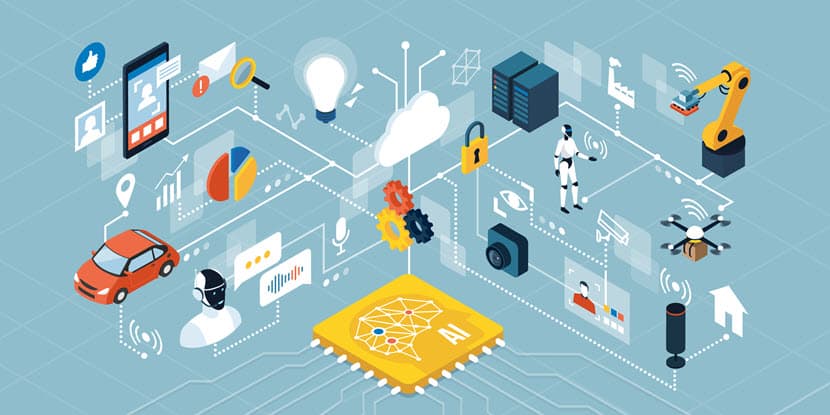
5G and Edge Computing
The advent of 5G promises data speeds of over 20 Gbps and delay-free connections of over a million devices per square mile. This emerging technology pushes edge computing to a new level, enabling even lower latency, higher speeds, and enhanced efficiency.
Companies will soon be able to use 5G to expand network edges. Overlapping networks will allow businesses to keep even more data on edge devices. Applications will also be able to rely on real-time communications with the network, a feature that will prove vital in the expansion of IoT.
Video Surveillance
Transmitting video data to a central server is slow and expensive. Edge computing accelerates this process by enabling cameras to perform initial video analytics and identify events of interest. The device then transmits the filtered footage to a local edge for further analysis.
For example, if a fire breaks out in a building with edge cameras, the devices can distinguish humans within the flames. Once the camera detects a person in danger, the footage is transmitted to the local edge without latency. The local edge can then contact the authorities directly, eliminating the need to send footage to the data center and saving valuable time.
Healthcare Opportunities
Setting up edge devices for patient monitoring can help hospitals ensure data privacy and improve patient care. The staff can offer faster and better care to patients while the hospital reduces the amount of data traveling across networks and avoids central server overloads.
Deploying edge solutions can improve the way vital healthcare machines operate, including portable EKG devices, sensors for monitoring temperature, and glucose monitors. Fast data processing can also save precious seconds for remote patient monitoring.
Our article about healthcare cybersecurity outlines the most common dangers within this high-risk industry.
Connected Cars
A car equipped with edge devices can gather data from various sensors and have real-time responses to situations on the road. This feature will be vital in the development of autonomous vehicles.
Edge computing can also enable automatic vehicle convoys. A group of cars or trucks can travel close behind one another in convoy, saving fuel and decreasing congestion. Only the first vehicle will require a driver, as the remaining cars can follow the first one and communicate without latency.
Monitoring Within Oil and Gas Industries
Edge computing can help prevent oil and gas failures. These plants typically operate in remote locations, so an edge center is a much better option than a distant server or cloud. Devices can use real-time analytics to monitor the system and shut down machines before a disaster occurs.
Online Gaming
Online multiplayer games can benefit from edge computing as the technology reduces lag. Players can organize mass-scale matches without impacting performance.
Cloud gaming can also benefit from edge computing. This type of online gaming streams a live feed of the video game directly to user devices. As data centers process and host these games, users commonly experience latency issues.
If a cloud gaming company sets up an edge server close to gamers’ location, the stream has no latency, and the gameplay becomes fully responsive.
Learn about dedicated servers for gaming, servers that allow players to customize and control their gaming experience.
Smart Factories
Real-time responses to manufacturing processes are vital to reducing product defects and improving productivity within a factory. Analytic algorithms can monitor how each piece of equipment runs and adjust the operating parameters to improve efficiency.
Edge devices can also detect and predict when a failure is likely to occur, reducing costly factory downtime. Companies can manage processes in a cloud-like way but maintain the reliability of an on-premises setup.
Online Shopping
The reduction in latency enables retail stores to create a rich, interactive online experience for their customers. Store owners can create an augmented reality for online shopping with seamless performance, and allow shoppers to purchase goods from home.
Brick-and-mortar retailers can also leverage edge computing to deploy virtual reality shopping assistants in stores.
A Technology on the Rise
Experts predict that 75% of data processing will happen outside the traditional data center or cloud by 2025. Get an early start with edge computing to uncover new business opportunities, increase operational efficiency, and ensure reliable experiences for your customers.
